The Sound of California Chrome
I moved out of the Collier House home studio where I recorded the album shortly after completion of the album. Now I use the back bedroom of my apartment as the new location.
Korg EMX-1
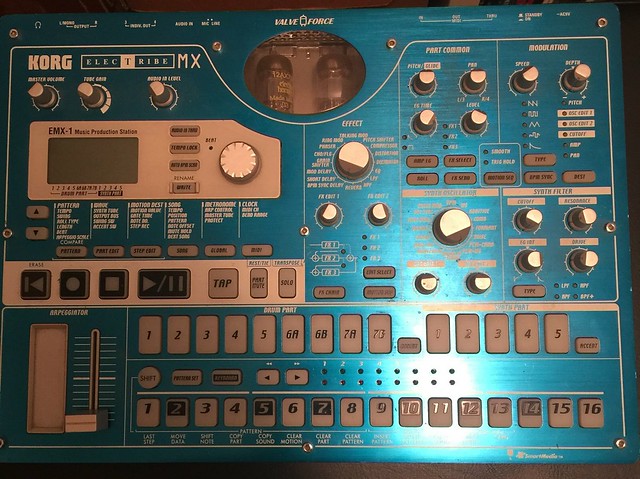
Korg’s EMX-1 is the most essential piece of gear I own. I sketch out a lot of my tracks on the EMX, which has made it easier to ditch the laptop in my live rig. It’s a fantastic machine and I found it easy to use only after a couple of hours of use. The work flow feels natural for me, it contains a versatile synth engine, and the vacuum tube adds warmth and presence to the sound. The pitch control option is a useful tool to deconstruct sounds and the midi functionality is great for connecting other synths when the electribe is used as a master sequencer. The individual outs also make it great for recording.
Alesis ION
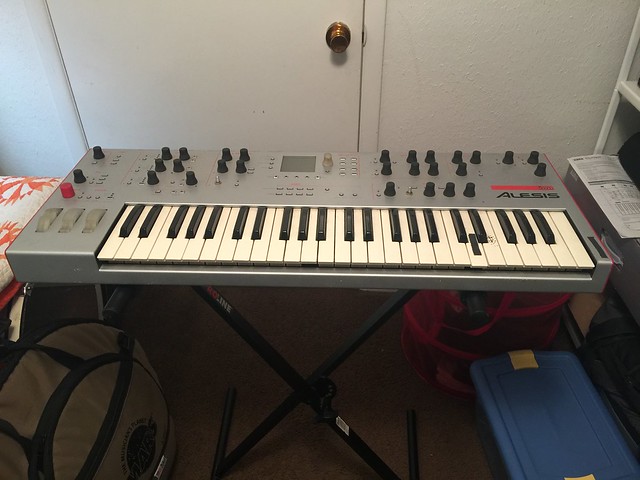
The ION is what I call “pad city” due to all of the pad/string options, but it does have the capability of making harsh FM sounds. One of the first synths I ever purchased was an Alesis QS6, and I’ve always had a softspot for Alesis keyboards. Sadly, this thing is totally on its last leg but I refuse to stop using it for records, even though it’s retired as a part of my live rig. The right output doesn’t work and the Midi in is completely non-functional but to be fair, this synth never really worked right when I received it. There’s a weird hum when it’s plugged in but it still slays thrown through a lot of pedals.
KingKorg
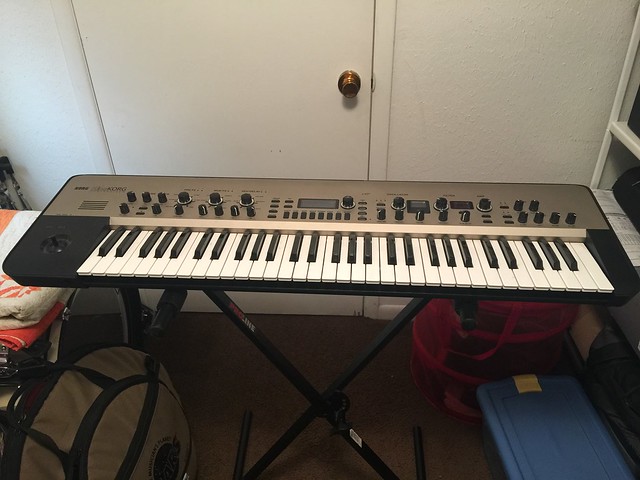
The KingKorg is my favorite synth of all time and this thing is all over California Chrome. It’s a great competitor to the Dave Smith Prophet 8 and I always refer to it as the “working man’s Prophet 8”. Who can afford DSI synths anyway? Certainly not me. The KingKorg has an amazing vocoder and lots of options like CV/Gate that enables it to work with older, pre-Midi gear. The melody line and the strings on 'Buckle Bunny' are all the KingKorg. If you haven’t guessed by now, yeah, I’m a total Korg nut.
Korg Poly-800
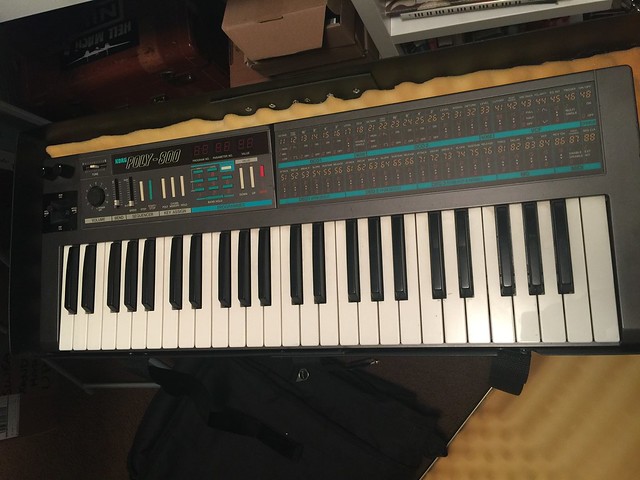
Another one of my all time favorites, the Korg Poly-800 with the Moog Slayer modification. In fact, this particular model was modified at Switched On by Michael Stein of S U R V I V E fame. 75% of 'Basilisk Stare' and 'Nervous Serpents' were created using the Poly 800. A lot of the bass lines for my tracks were used with the Poly-800, and the built-in sequencer is awesome. It’s a pretty versatile synth if you don’t mind the dreaded 80s menu-diving aspect to it.
Pedals
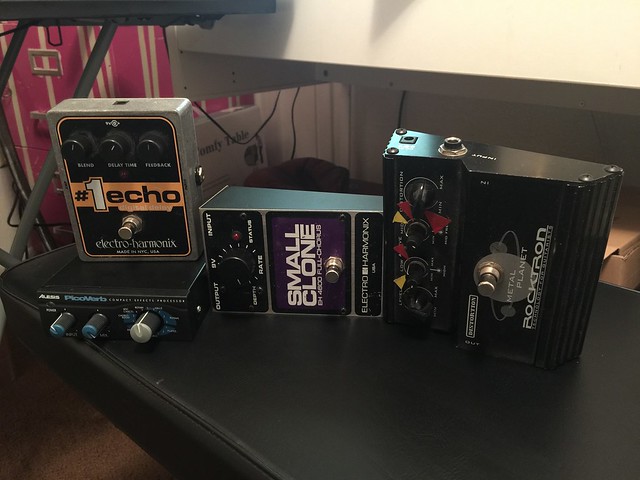
Plug-in effects in my DAWs are used as well, but for a lot of the live tracking I would use pedals to help flesh out the sounds. My favorite is the Metal Planet Rocktron distortion; that thing is nuts and I used it for the distortion on the leads for 'Basilisk Stare'. I stumbled upon the pedal at the Music Labs, an Austin pay-by-the-hour rehearsal space, for thirty bucks. A lot of chorus (Small Clone) is used on the bass synth parts and all of my arpeggiations are run through the Electro Harmonix #1 echo for a kind of weird bouncing effect. I also used the #1 on the Poly-800 melody on the track 'Dirts'. The Alesis Picoverb is great for large hall reverbs, and I would use that for the strings and pad sounds.
Drums
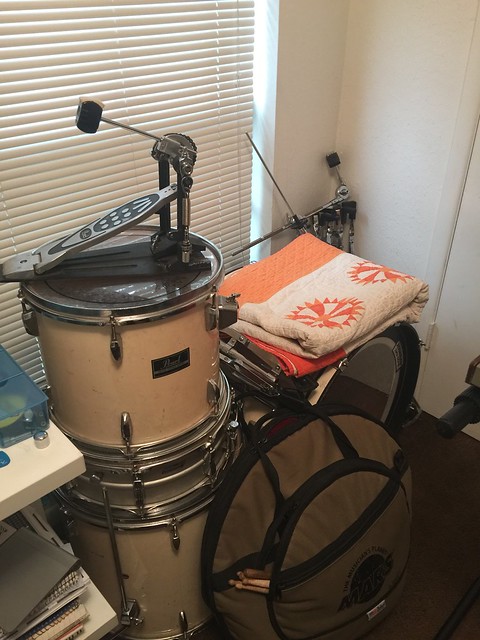
The secret to some of my drum sounds is that I stack a lot of acoustic drum parts on them as well. I use a rented AKG D112 on the bass drum and a Shure SM57 on the snare. I will multi-track the parts on their own channels to mix very subtly with the electronic drum parts. The ride on 'Dirts' is from my Sabian ride cymbal through a gate with a little bit of reverb to give it a weird pump sound.
Nerve Centre
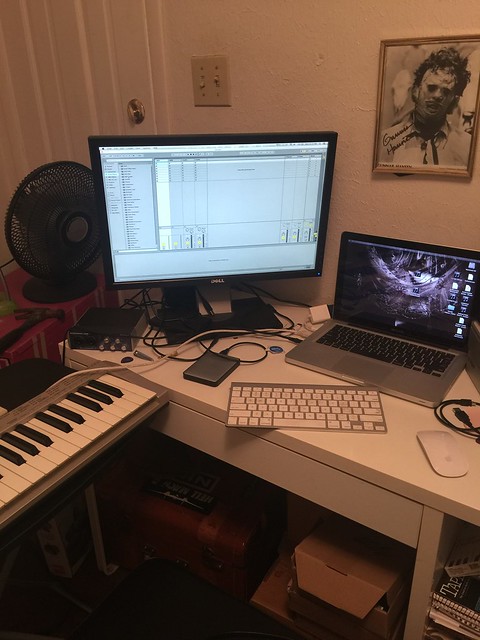
This is my desk and that is my Mac Book Pro loaded with Ableton, Pro Tools, Logic, with Native Instruments and Arturia soft synths. I use a Pre-Sonus via USB 3 to capture the left/right mix out of an 8 channel Mackie mixer. The Roland Edirol controller is used for my soft synths, or I will use the midi out function on it to edit the notes on the Korg Electribe. For California Chrome, I recorded 99% of it in Ableton Live 9 and used Ableton as the master clock for Midi. I would then edit together the takes, fix some timing issues, and then stem out the tracks to be mixed in Logic.
The record was 100% mixed in Logic. I like the automation in Logic, and my version of Steinberg Waves plug-ins seem to work better loaded into it. I had originally tried mixing the album in ProTools but I’ve grown to really not like Pro Tools at all; it’s too clunky.
The autographed Gunnar Hansen from Texas Chainsaw Massacre is the spirit animal of the studio.
California Chrome is out now on Rock Action. For more information, please visit his Bandcamp page.























